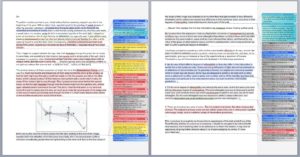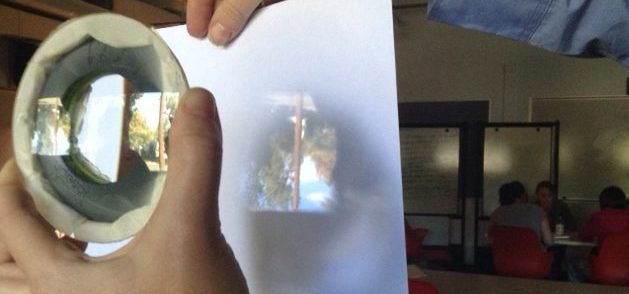 “When scientists select and read a research article, the effort is generally goal-directed, related to ongoing work, connected to scientists’ interests, and social. There are structures in place (some explicit, some woven into the fabric of the scientific community) to support reading, critiquing, and using scientific texts. Consistent with these characteristics, we introduce scientific articles only after students have gained familiarity with the phenomenon under investigation; developed their interests in relation to these ideas, questions, and nascent models; and have ideas and debates that the readings might address.” –Chapter 5, Composing Science
“When scientists select and read a research article, the effort is generally goal-directed, related to ongoing work, connected to scientists’ interests, and social. There are structures in place (some explicit, some woven into the fabric of the scientific community) to support reading, critiquing, and using scientific texts. Consistent with these characteristics, we introduce scientific articles only after students have gained familiarity with the phenomenon under investigation; developed their interests in relation to these ideas, questions, and nascent models; and have ideas and debates that the readings might address.” –Chapter 5, Composing Science
Click here for lesson plan: “Journal Clubs: Learning to Read Together”
Take-Home Messages “Reading Together”
- When choosing articles or other texts to read, we keep the following in mind:
- » The priority is on selecting texts that students can interact with in scientific ways. This, we believe, is more important than selecting texts that practicing scientists read.
- » As in other professional settings, when scientists read others’ work, it is generally a goal-directed and purposeful activity, related to their own work and interests. Similarly, we ask students to read texts related to their current work and questions. This requires that readings be introduced after they have engaged with a topic and formulated tentative ideas and questions.
- » You might select a reading for students to use to analyze the structure of an argument; in this case, a complete article may make the most sense. On the other hand, if you want students
to consider a particular representation, claim, or experiment, an excerpt may help generate a more targeted, focused conversation.
- Scientists read together. As reviewers, editors, in journal clubs, and in lab groups, scientists discuss and make sense of scientific writings with one another; similarly, readings for class should be part of the social meaning-making that students do as they consider scientists’ ideas and implications of those ideas.
- Online technologies can make “reading together” relatively easy: Google Docs and Medium both offer straightforward methods for commenting on text.
- When discussing a reading in class, having a “product” for the discussion can help provide structure and permanence to the conversation, and help novices have a way to make sense of the text and discussion. By “product” we mean things like developing a list of questions that the text raises, answering a set of questions that came up while students were reading, comparing scientists’ ideas with the class’ ideas, repeating an experiment that is hard to understand, or describing implications of experimental data for their own models.
- When discussing a reading, particularly in a larger class, facilitation is important. Give some forethought to how you will have the class make progress on the product(s) for the discussion: small groups, partners, and so on.
